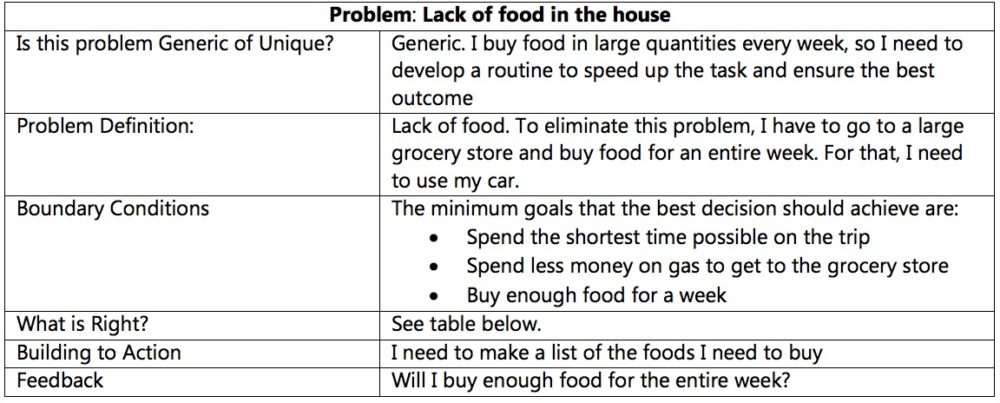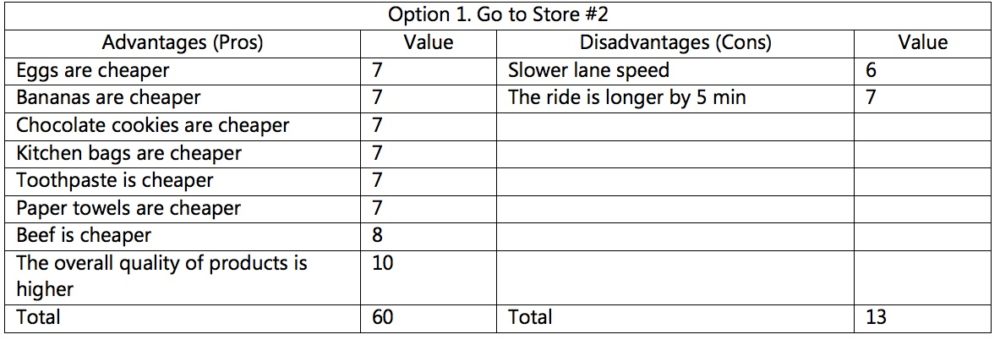
This is a guest post by Diana Clark. She once made a big decision to give up her career for something she always dreamt about – quiet family life in the country side. Diana is a freelance writer at College-paper.org and you can connect with her on Linkedin.
For centuries, the general definition of a “smart person” was tightly linked to academic expertise. However, there is a considerable disconnect between the knowledge taught in universities and the knowledge required in everyday life. If this disconnect did not exist, people with high IQ would not commit stupid things at all. But they do.
More recently, this definition changed with the emergence of the idea of emotional intelligence, or EQ. It emphasizes the significance of political and social skills in all areas of life. Although EQ provides a more accurate definition of intelligence, there is still lots more to it than social skills.
For example, people with excellent social skills often make ridiculous decisions when it comes to ordinary things. Famous examples of these people include Steve Jobs and Larry Ellison.
The importance of having the ability to make effective everyday decisions is sometimes underrated. Of course, deciding what to eat, what to wear, and how to get to work might not sound like a big deal, but they are. Even postponing a decision is also a decision because it has distinct implications for one’s life.
To ensure that our everyday decisions have the most positive implications, we can try to figure out a formula for making them. This formula would help us to have a clear idea of our strengths and weaknesses, priorities, and values. Eventually, it can teach us to simplify decision-making process by refining us a bit.
Are you interested in finding your formula for successful everyday decision making? After all, as Keri Russell famously said, sometimes it’s the smallest decisions that can change your life forever.
Let’s Learn from the Masters
Deciding who has the most relevant and comprehensive formula on decision making is not easy. Hundreds of brilliant entrepreneurs, life coaches, and time management gurus have their own unique approaches. Finally, I decided that the formula that survived the test of time should be the one I use.
There is only one formula that meets this requirement fully: Peter Drucker’s Theory of effective decision making. It was originally published in 1967 but it is still regarded as the most comprehensive and easy approach.
Even though Drucker developed this theory with business decision making in mind, it’s easy to connect it to everyday decisions.
The Universal Formula
According to Drucker, every effective decision-making process must go through a number of essential steps to ensure that all things are considered. Of course, these steps cannot make the decision by themselves, that’s why their primary purpose is to ensure the most comprehensive overview of the situation for the decision maker.
Here are the six steps he recommended:

Let’s discuss each of the steps.
- Problem Classification – the problem needs to be categorized as generic or unique.
- Problem Definition – the person making the decision needs to figure out what the situation is all about
- Boundary Conditions – the minimum goals of the decision need to be defined
- What it Right – instead of thinking “what will be acceptable to the majority?” one should ask themselves “what is the right answer in this situation?”
- Building to Action – one cannot consider a decision as such if no action to enforce it was implemented
- Feedback – the decisions can go wrong. A feedback mechanism needs to be in place to ensure that it achieves the desired outcomes.
How Can This Formula Be Applied in Everyday Life?
The formula that was developed for business purposes can be easily applied to make simple decisions.
Step 1. Problem Classification
At the first step, we need to determine whether the problem has happened before or it must be treated individually. Let me explain how it works. Decision-making works like a muscle: it develops a memory for doing a certain task but it gets tired effectively. That’s why one of the best ways to speed up this process is to treat many problems as generic. Simply said, we can turn them into routines.
By doing so, we can free up mental resources for more important decisions. Take Mark Zuckerberg for example. He is always wearing his famous hoodie, whether on stage for a big presentation or in office for a typical workday.
“I never take off the hoodie,” Zuckerberg often says.

Zuckerberg is one of the best examples of how one can turn a decision into a routine to cut down on decision fatigue. Instead of thinking what to wear every day he decided to make one simple choice. Apparently, he has many other, more important decisions to make so he classified this one as a generic and treated it as such.
Step 2. Problem Definition
This is a key step that gets overlooked by many people. Contrary to the popular belief, many problems are not as obvious as they seem to be. As the result, decision makers try to cure the symptom rather the disease.
To define the problem in the right way, one should ask the following questions:
- What is the situation all about?
- What is pertinent about this situation?
- What could be the source of this problem?
- What is the key to the situation?
These questions may not seem overly sophisticated (perhaps that’s why so many people ignore them and focus their effort on symptoms) but yet they are the core in the strategy to define the problem.
Step 3. Boundary Conditions
A decision maker must clearly define the primary as well as secondary goals the decision has to achieve. In other words, the decision has to be adequate to its purpose. And, more importantly, one should not depend on the decision that requires everything to go as planned.
Step 4. What is Right
A decision maker must decide what is right from the very beginning. The reason for this is a focus with which people make their decisions. For example, some try to satisfy the needs of other people. However, one should try to compromise on the benefits of the decision rather than tailor it to requirements of others.
One easy way to define whether the decision is right is to make the list of pros and cons. It is the old chestnut of decision-making that you should definitely use. Just write down all advantages for you and other people and let the side with the most entries win (for that, you might want to assign points to each entry).
Another thing that you should consider while making a decision at this point is bias. Most of the time, human behavior is driven by unconscious, emotional motives, so they can seriously undermine the quality of the decision we make.
Recognize your default biases and try to avoid them. This will help you to think clearly.
Step 5. Building to Action
A decision is incomplete if a person does not commit to action. Until the desired outcome occurred, no decision was made. For example, if a student decides to attend a free writing workshop held by college paper writing service in order to improve the quality of his academic writing skills, but never acts upon it, then the decision is merely a hope for a better outcome.
To ensure that the desired outcome happens, all necessary actions need to be built into it from the very beginning. Converting the decision into action involves answering the following questions:
- What people have to know about my decision?
- What action has to be taken to ensure that I reach the desired outcome?
- Who has to take this action?
- What has to be done so the person who takes the action can do it properly?
Step 6. Feedback
This step is necessary because the original decision needs to be compared to the actual results it produces. The feedback has the power to change your decision making and even make it make rational. Instead of relying on someone to see how your decision is being carried out, you should go out and look for yourself. A failure to do so can result in additional, avoidable actions.
Decision Making Process for a Simple Decision
Let’s now proceed to an example of a decision that was made with the strategy identified above.
Problem: Lack of food and hygiene products in the house. I need milk, bread, beef, green peppers, eggs, bananas, paper towels, toothpaste, and other items.
Question: Should I go shopping to Store #1 or Store #2?
Option 1: Go to Store #1
Option 2: go to Store #2
Question: what is the rating for each of these options?

Now that we have gone through the decision-making process, let’s explore the fourth step (What is Right) a bit more. A pros-cons approach is taken here to ensure the best decision.

The information about the second option is provided below.

As you can see from the example, the total value of benefits for Store #1 was 58 while Store #2 scored 60 points. However, the first option slightly outperformed the second one (by one point). So, Store #2 wins only by one point.
To make the decision that right for YOU, you have to consider the most influential advantages and disadvantages. And don’t forget about avoiding bias!
The advantages and disadvantages that scored the highest points reveal that Store #2 has a higher overall quality of products, but to get there you have to spend additional 5 minutes on the road (which translates into more spending on gas). On the other hand, the products at Store #1 are of a poorer quality but it is closer to home and has a faster lane speed.
The final decision is as follows: the first option wins because it achieves all three goals outlined in the boundary conditions and meets most of other requirements.
This decision, of course, depends on your personal preferences. For example, if higher quality products if your minimum goal but time is not an issue, you need to go to Store #2. However, if you don’t want to spend additional time on the road and prefer a store with a faster lane speed, Store #1 is your best option.
The Decision Is Made!
By using the Ducker’s model for decision making, we’ve succeeded in determining the best option. Every time you need to make a decision, think of yourself as a player at a poker table with an advantage: you can see everyone else’s cards but they cannot see yours. In this case, how many hands would you play wrong?
The same rule applies to everyday decision making: the person with the fewest blind spots wins. So, use the strategy above to ensure that you have the fewest blind spots and improve your ability to make correct and confident decisions!
This is a guest post by Diana Clark. She once made a big decision to give up her career for something she always dreamt about – quiet family life in the country side. Diana is a freelance writer at College-paper.org and you can connect with her on Linkedin.
